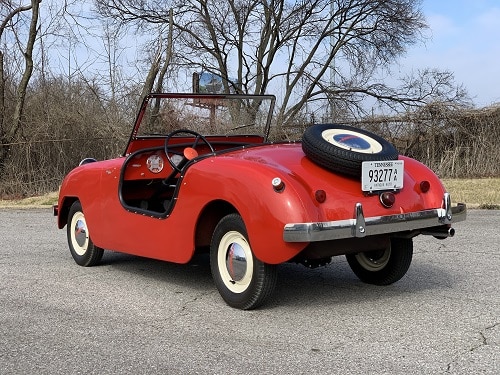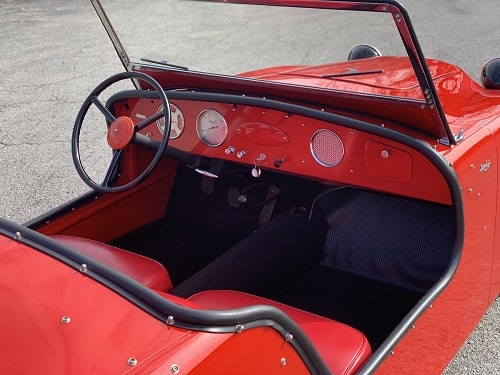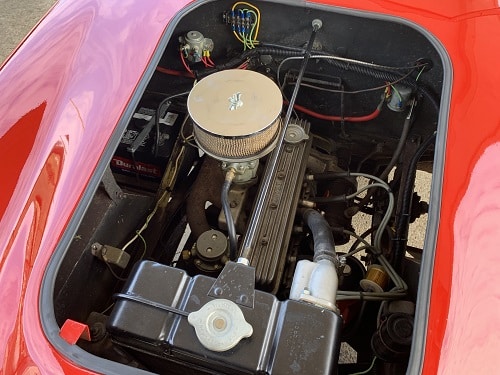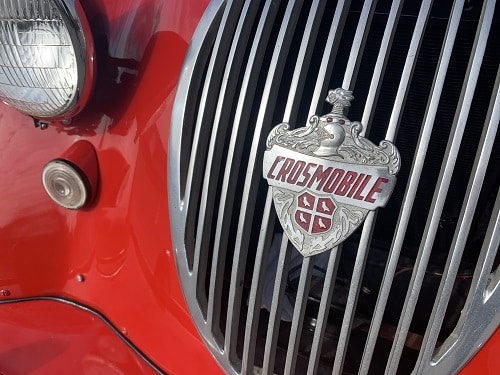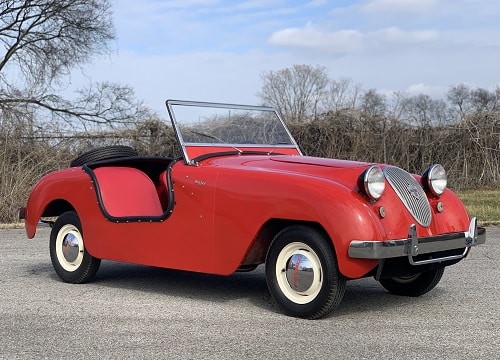
Crosley Hotshot (Crosmobile)- 1949
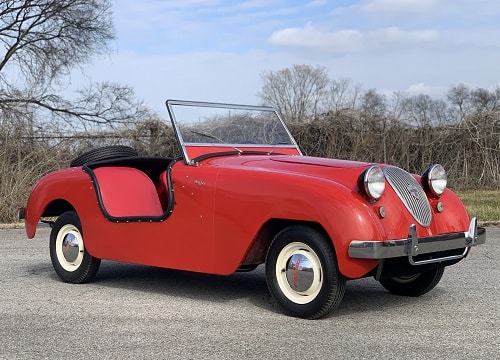
During World War II, American soldiers assigned overseas were introduced to the thrill of spritely open roadsters. It wasn’t long before American automotive manufacturers turned their attention to the growing demand for open, two-seaters. Powel Crosley, Jr. of the Crosley Radio Corp, and Crosley Motor Inc. (and owner of the Cincinnati Reds baseball team!), took note. He and Crosley engineer, Paul Klotsch, began dreaming up what is commonly known as America’s first postwar sports car, the 1949 Crosley HotShot.
The HotShot was a modest move from Crosley’s line of minimal vehicles, being five-inches longer and riding on an 85 inch wheelbase. Instead of opening doors, the driver and passenger stepped through a drop-down in the side panels. In 1951 and 1952 Crosley added full doors to the Super Sports while the HotShot continued using the step-down sides with removable half doors. Under the hood was the new CIBA (cast-iron block assembly) 44-cu.in., four-cylinder engine with 26-horsepower. The high-revving CIBA engine replaced the COBRA (copper-brazed) engine, in use since 1946. Best of all, the HotShot had an initial base price of $849!
To complement its advanced engine, and added weight (30lbs more than the CIBA), Klotsch read up on spot disc brakes, a superior braking system used on light aircraft. In late 1949 and 1950, all Crosley’s off the production line, including the Hotshot and Super Sports, came equipped with “Hydra-disc” brakes, an adaptation of Goodyear-Hawley aircraft brakes, on all four wheels. These brakes had great stopping power, but on the salted, wintry roads in the north, the alloy parts corroded and locked up. In mid-1950, Crosley switched to the 9-inch Bendix hydraulic brakes of a more conventional design.
The 1949 Crosley HotShot seen here, is a rarer Crosmobile version. Crosleys were re-badged as Crosmobiles for export only. They were identical to standard Crosley except for the Crosmobile-badged hood, rear badges, and hubcaps. The reason for re-badging the exported Crosleys was to avoid any conflict with England’s Crossley Motors. Powel exported Crosmobiles to Europe, South America, and Cuba, making them an extremely rare find in the United States, and a very low number survive today.
Even more unique, our 1949 HotShot features a grill and aftermarket engine upgrades produced by the Braje Company of Los Angeles. Braje was a period speed equipment manufacturer of performance Crosley parts. Throughout the early fifties, HotShots dominated 750cc H-modified sports car racing, winning 10 out of 12 SCCA West Coast races alone. In 1950, a Hotshot took the overall win at the inaugural Sam Collier Memorial Endurance Race in Sebring, Florida, among others. The 748cc inline-four on our HotShot features original Braje Speed Equipment modifications including a finned aluminum valve cover, a performance intake manifold, a cast exhaust header, and a cast oil pan. Nick Brajevich, the founder of Braje, hit 97 mph at the Santa Ana, California, dragstrip in 1953 in a Crosley-powered rail dragster!
Specifications:
Manufacturer: Crosley Motors, Inc.
Country of Origin: United States
Drivetrain Configuration: Front-mid-engine, rear-wheel drive
Transmission: Warner 3-Speed Manual Transmission
Engine: Four-cylinder, 26.5 hp
Top Speed: 77 miles per hour
Years of Production: 1949-1952
Number Produced: 2,498 (Hotshots, Super Hotshot, and Super Sports incarnations)
Original Cost: $849

